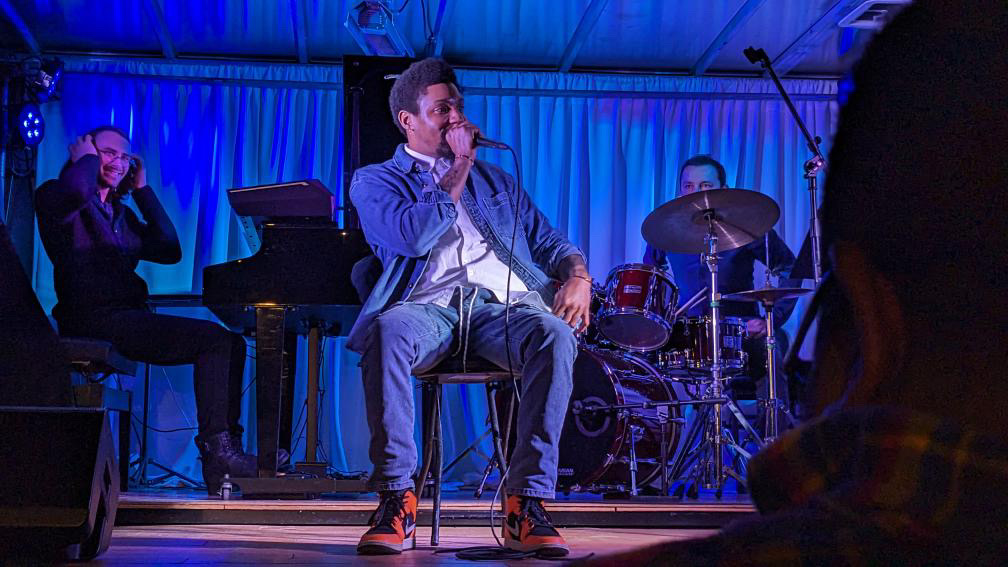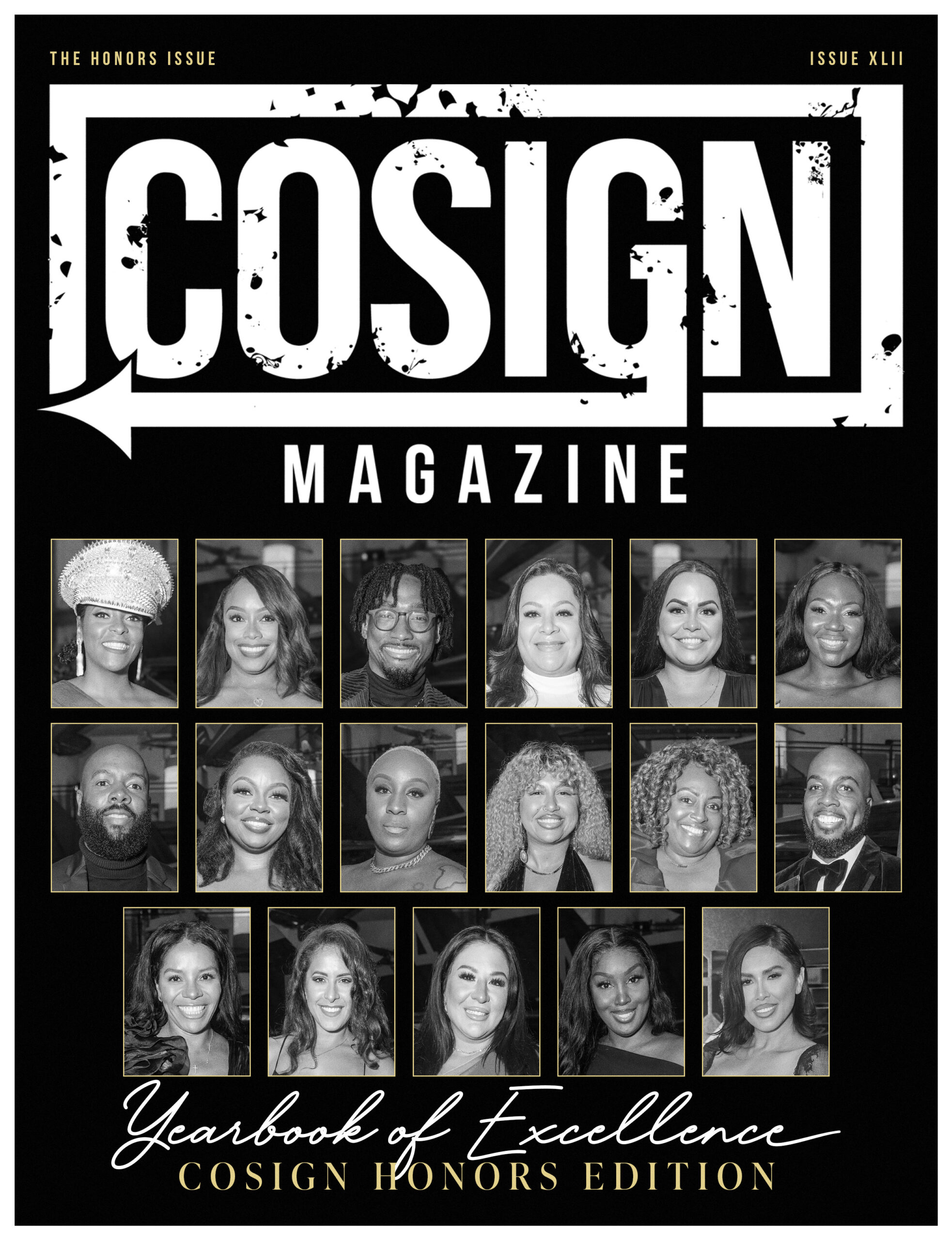
How Adversity Pushed Lamar Adot Thomas To Make Music On His Own Terms
By Alex Gonzalez
Lamar Adot Thomas hasn’t lost sight of the big picture. This year, the Dallas rapper, who arrived here by way of New Orleans, dropped his 11th album, Orange Hoodie SZN. Tapping into a variety of sounds, cadences, and melodic stylings, Thomas pushes himself forward as one of Dallas’ most multifaceted acts. Having released 11 albums over the span of a decade, Thomas isn’t taking his foot off the gas anytime soon.
We met up on a fall evening in East Dallas, grabbing dinner at an Indian restaurant. He orders the vindaloo, extra spicy. “I’m from New Orleans,” he says, “We like the heat.”
Last year, Thomas released his 10th studio album, Sade Flow, which featured him delivering scorching bars and melodic vocals over smooth, downtempo beats. On Orange Hoodie SZN, he takes the hip-hop elements a step forward, demonstrating a more competitive version of himself.
“It was literally me pushing the fascination of like, showcasing that I can work with a good melodies and chorus,” says Thomas, “but I was mainly pushing towards lyrics.”
Months after the release of Orange Hoodie SZN, Thomas put out a companion EP called Anthony, a rhythmic, conscious EP which delves more into an introspective side of him. “Instead of it just being simply hip-hop, we’ve got melodies, we’ve got singing,” he says. “It’s me opening up just a little bit more.”
It certainly hasn’t been an easy year for Thomas. Back in April, he spent two nights in the hospital after his car got T-boned. At the time of our conversation, Thomas is in good spirits, despite having faced quite a few setbacks. After all, if there’s one thing Thomas is going to do, it’s make things happen for himself, no matter the roadblocks that hinder the path. “Everything that I wanted to happen this year, happened,” says Thomas, “It just didn’t happen the way that I wanted. Especially with the car accident, I was wanting to get a new car, so I wound up getting a new car. I was planning to move in June, but April was the accident, so I had to push me moving, back into July. So I moved into a way bigger place.”
In his new home, Thomas is able to hone in on his craft, the way he wants to. He finds himself writing music everyday and admits he’s sitting on “terabytes of music.” But the way his new home is set up, he can better align his energy toward his craft, and level up when the time is right. Otherwise, he would simply end up drowning in work, even when it didn’t feel right. “You can put your studio in the kitchen, or in the living room, or whatever,” says Thomas, “but I’ve always wanted walls to basically define myself. So if I’m in the living room, I’m in the living room, chilling. If I want to eat at the table, I can eat at the table. That’s been the biggest thing for me, having those walls, so I can actually live a life instead of, walking inside and going straight to music.”
While Thomas has maintained a steady flow of work over the past few years, and has consistently grown his catalog, he knows a good idea when he has one. A lot of the songs on Orange Hoodie SZN and Anthony were written months, even years, before they were finalized. On Anthony’s opening track, “Orange Skies,” Thomas delivers an account of mental health, offering a reflective internal inventory, as he strives to move away from pride and struggle. The song features a sweet, silky hook by R&B vocalist Kam Simmy, who, Thomas says, gave the song a softer element, which he was looking for.
“I’d already had that song written,” says Thomas. “When I was going through my drafts, I was like ‘Oh my Gosh, I cannot sing, let me find someone that I vibe with.’” When crafting the song, Thomas was inspired by the science of color. “We might see it differently, but it’s still in the same wave. If you think about it, everything is seen in waves. You might not think about it, but everything is a wave. I took the idea of how the sky reflects the ocean, and there’s so many people who are like, ‘That’s why it’s blue.’ We’re all different, but we all experience the same feelings. Sometimes you might feel sad, sometimes you might feel happy, sometimes you might just be wondering what’s going on. A lot of people might feel lost in the world, but there’s a certain search-and-find to it all.”
On another song, “YoYo’s,” Thomas floats on a rattling drum loop, delivering layered bars that may go over the listener’s head if they’re not familiar with dirty South hip-hop. “I can flick my wrist and have the profit back like yoyos/ Ball up my fist / Must be ludicrous, how I throw bows / Fabulous, my drip low-so,” he raps on the song’s chorus.
Eleven albums in, Thomas has given the rap game his all. By day, he works a day job, but by night, he hits the studio, exercising his pen and toning his wordplay and flows. The way Thomas has approached his music has changed, but he still lives by the age-old adage: practice makes perfect. “I do it every day,” he says. “I have that idea of, if I’m working for someone else as hard as I am, I need to do that for myself. But I’m not forcing myself to go right to it. Everything is becoming more natural now.”










